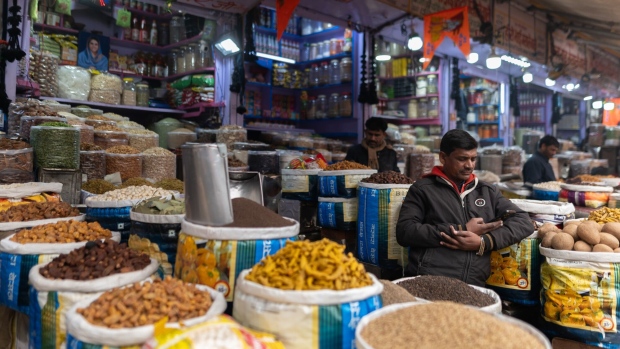Feb 24, 2024
India’s Household Spending Doubles in 12 Years, Survey Shows
, Bloomberg News

(Bloomberg) -- Indian household spending has more than doubled in over a decade with discretionary items getting a larger share of expenditure, a government report showed, providing clues for companies tapping on the world’s most populous nation.
Average monthly per capita consumption expenditure in urban areas rose to an estimated 6,459 rupees ($78) in the survey conducted between August 2022-July 2023, from 2,630 rupees in 2011-12, according to the statistics ministry report released Saturday. In rural India in the same period, it climbed to an estimated 3,773 rupees from 1,430 rupees.
Households are spending less as a percentage on food items, the survey showed, giving insight on consumption patterns of Indian households. Expenditure on discretionary items such as clothes, television sets and entertainment increased, according to the report.
With elections just a few months away, Prime Minister Narendra Modi is in a strong position to return to office for a third term. Government spending and domestic demand have driven growth and the economy is forecast to expand 7.3% in the fiscal year ending March. That would make India one of the world’s fastest-growing major economies.
Modi’s administration has been criticized by experts over reliability and quality of some economic data. The government didn’t release results from a consumer expenditure survey conducted in 2017-18, citing methodology issues. In absence of credible data, analysts used alternative indicators like air traffic and fuel demand to check the pulse of India’s economy.
“The higher growth in per capita consumption expenditure of rural and urban areas stands in contrast with the argument that rural economy has been sluggish since 2016-17,” said Madhavi Arora, an economist with Emkay Financial Services Ltd.
Read more: Population Boom Spurs Hunt for Stock Market Winners in India
The share of food in monthly consumption in rural areas declined to 46.4% in the latest survey, from 53% in 2011-12, while non-food consumption increased to 53.6% from 47%, the report showed. Food’s share in urban areas declined to 39.2% from 42.6% earlier, while non-food share rose to 60.8%, from 57.4%.
Data from the latest consumer expenditure survey will be used by the government to readjust items considered for calculating retail inflation and gross domestic product data.
Read more: Junk Food Giants Find $30 Billion Prize in Under-Regulated India
(Adds analyst quote in sixth paragraph)
©2024 Bloomberg L.P.

